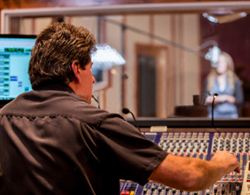Audio engineering is a surprisingly competitive arena. Us meek and mild mixers often find ourselves in head-to-head competition — or even tougher — competing against some imaginary beacon of greatness.
But this ain’t basketball. We don’t know who wins based on points. In fact, the only people who really keep score are other engineers — the kick in that song is a 9.2 out of 10, but the vocal reverb is only a 7 out of 10. Most people don’t really think or judge this way.
What makes a great mix? Well, most producers will tell you a great performance and great arrangement mixes itself. There’s a reason for this. A great mix isn’t really separate from a great production, and a great production isn’t really separate from a great song. The mix isn’t really the balancing of the production elements. The mix is facilitating the song on record.
This facilitation comes through the balancing of elements, the manipulation of tone and dynamics and the orchestration of space. But the whole goal is to make the listener hear, and feel, a song in the artist’s intended way. We aren’t really manipulating sounds, we’re manipulating emotional cues in the form of sound.
Let’s break it down:
1. Figure out the emotions of the song. This is the sum of the parts. When you listen to the song, the lyrics and the performance, there are feelings and intentions. Now, some of them will be clear, others will be ambiguous, and some will be contrasting. But we’ll get to that. For now, the question is what should the end listener be feeling when they are listening to the song.
This may vary section to section. Or the feeling might come from the difference between sections. The point is: figure out how the song is meant to hit the listener. The more you can figure this out, the stronger of a foundation you have for your mix.
2. Figure out how each element supports the emotions. Emotions are complex. You might have a “sad” sounding piano riff. If the whole effect were sadness, you might have a sparse, dragging, and/or lightly played drum part (or maybe no drums). But, you might have the sad piano riff contrasted with driving drums. This might create the feeling of fighting through something, or feeling distressed, or a host of other emotions.
Figuring out how each part interacts gives you context for your mix. If the parts contrast in feel, perhaps they should contrast tonally or dynamically as well? Is the piano supposed to be sad — as in depressed — or sad as in haunting? Perhaps emphasizing lower tones in the former and higher tones in the latter will help convey that intention. I can’t prescribe any kind of formula for this, that’s the beauty and subjectivity of mixing.



















